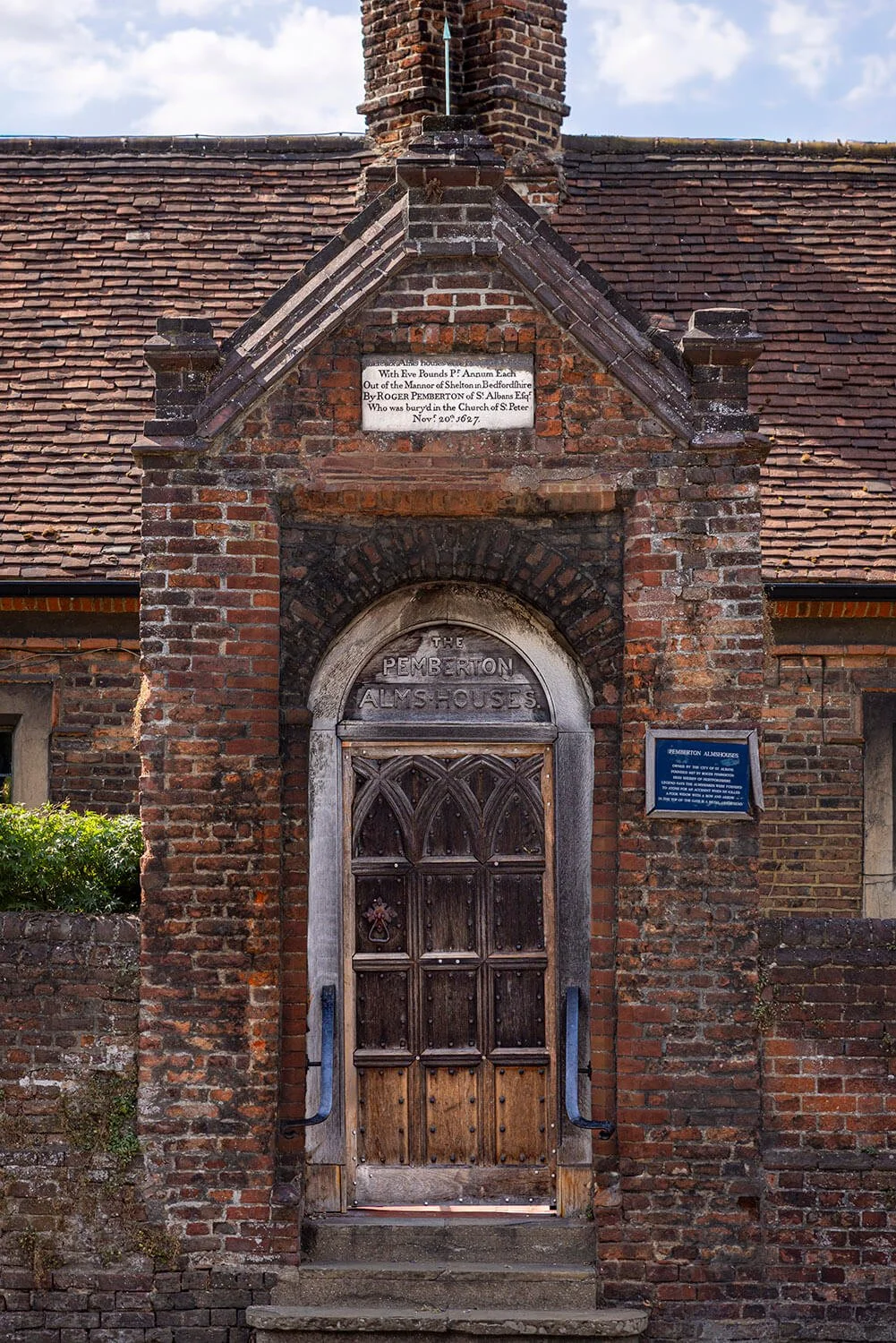Top 5 most unusual things to see and photograph in St Albans – a quirky photowalk
I’ve lived in St Albans for 23 years, and it’s genuinely one of the best places to call home. With its Roman origins, medieval landmarks, and hidden historic corners, it’s a city that constantly surprises you. Whether you're a local or just visiting, St Albans offers endless photographic opportunities beyond the usual tourist highlights.
This walking guide is all about discovering the more unusual and quirky places to photograph in St Albans - perfect if you're after something a little different. These six spots are just a handful of hidden gems, and there are many, many more to discover if you keep your eyes open and your camera ready.
This route is easy to follow on foot, beginning near St Peter’s Church and looping down through the centre to finish at the Cathedral. Along the way, you’ll find a fascinating mix of folklore, forgotten signs, and centuries-old secrets - a dream for street and detail photographers alike.
1. Pemberton Almshouses – the arrow and the widow
St Peter’s Street, near St Peter’s Church
Start your walk on St Peter’s Street and look out for the beautiful Pemberton Almshouses, built in 1629 to house “six poor but respectable widows.” Above the gate, you’ll see a sharp iron spike - said to mark the spot where Roger Pemberton accidentally shot a widow. As the story goes, he funded the almshouses in repentance. True or not, it’s a curious detail with a dramatic backstory that makes for a unique photo.
Next stop: head south down St Peter’s Street towards the town centre.
2. Commit no Nuisance – the Clock Tower door
Clock Tower, High Street
On the High Street, you’ll find the medieval Clock Tower, the only surviving example of its kind in England. At the base is a worn wooden door bearing the hand-painted instruction: “Commit No Nuisance.” This oddly charming warning is a quirky piece of public order history and adds character to an already impressive structure built in the early 1400s.
Continue a few steps down the road to Chequer Street.
3. The Bat & Ball – St Albans’ smallest pub
Chequer Street
Tucked discreetly between modern shops on Chequer Street is the former Bat & Ball pub. Once the smallest pub in St Albans, it closed in the early 1980s, but its carved wooden signage remains. The top floors of this 16th-century timber-framed building are said to be made from ship timbers dating back to the reign of Henry VIII, and now house a quirky Airbnb. The contrast between old and new makes it a brilliant detail shot.
Backtrack slightly and cross over to Waxhouse Gate.
4. Waxhouse Gate – history in a passageway
Connecting the Cathedral precincts to the High Street
Waxhouse Gate is a narrow, atmospheric passageway linking the Abbey Quarter to the High Street. Once a busy thoroughfare for medieval traders and pilgrims, it now offers a peaceful escape with a hint of mystery. The worn stones and natural light patterns make it an ideal setting for urban detail photography.
Now, head through into the Cathedral grounds and step inside.
5. Medieval Graffiti in St Albans Cathedral
Inside St Albans Cathedral (Norman Tower and Cloisters)
Inside the Cathedral, hidden among the ancient stonework, you’ll find some of the city’s most unexpected photographic subjects - medieval graffiti. These centuries-old carvings were made by pilgrims, choirboys, masons and visitors. Names, symbols, and doodles are scattered throughout, particularly in the Norman tower and cloisters. They offer a human, almost playful glimpse into everyday lives from long ago. Bring a torch and a zoom lens to really uncover the detail.
Up for one final, spooky stop? Head towards Lower Dagnall Street.
Bonus stop: the Succubus of the Christopher Inn
An alleyway off French Row, near an entrance to Christopher Place Shopping Centre
Outside the Christopher Inn, look up and you’ll spot a truly strange figure - a voluptuous demon-like carving with goat’s feet shackled together. This is the succubus, a figure from folklore believed to seduce men in their dreams. Rather than being a warning, her restrained feet symbolise protection - showing the inn was safe from evil spirits. A wonderfully bizarre piece of historic charm, and something very different to capture with your lens.
Ready for your own St Albans photowalk?
This walking route covers around 1.5 miles and is ideal for a relaxed hour or two with a camera in hand. Whether you're shooting for a personal project, building your street photography portfolio, or just out exploring, these are some of the more unusual things to photograph in St Albans.
Of course, there are many more hidden corners to explore – secret signs, quirky windows, forgotten carvings – all waiting to be noticed. So get out there and see what strange and wonderful details you can find.








